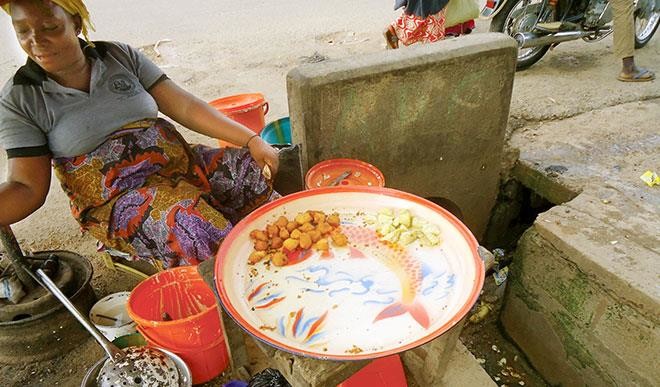Why indigenes, others are ‘crazy’ about Zaria yam
For some Nigerians, indigenes of Zaria are the second most-known consumers of yam. Daily Trust took a look at the love affair of sorts between the starchy staple and Zaria indigenes. Yam farming is one of the more famous professions that are practiced by the indigenes of Zaria. Being that the trade is a major […]


For some Nigerians, indigenes of Zaria are the second most-known consumers of yam. Daily Trust took a look at the love affair of sorts between the starchy staple and Zaria indigenes.
Yam farming is one of the more famous professions that are practiced by the indigenes of Zaria. Being that the trade is a major one in Zaria, residents jealously guard it. Because of this, the ancient city has over the years emerged as hub for yam farming. Perhaps, prominence of the staple in Zaria makes other Nigerians to synonymise indigenes with it.
But Zaria did not achieve this out of the blue. Many factors, Daily Trust found, are behind it. The quality of Zaria yam, according to findings, is one of those factors. It attracts consumers and traders from different parts of the country and beyond. It has been described by many as tasty and mouth-watering, qualities attributed to the nature of Zaria soil.
The jovial countenance of Malam Najume Shehu was infectious. He was seen attending to customers who stopped to patronise his yam, displayed by the road at Kwanar Farakwai axis of the Kaduna-Zaria express road. He was trying to convince his customers to buy his yam, as they were complaining about the cost.
“You see, this is Zaria yam. It is special. When you buy this yam, you will always come from Kano to this place to buy. Zaria yam is special and it is now expensive largely because we are yet to start harvesting new yam,” Malam Shehu smiled.
Despite the fact that many residents of Zaria are yam farmers, most residents cannot afford to make the tubers part of their daily menu, especially at this period of the year due to high cost.
On the streets, also, there are many small businesses mainly run by women and some men, where fried yam is prepared, along with ‘Kosai’ and other delicacies. Fried yam is very popular across the nation, earning a nick-name from students, who call it ‘Combined Honours’ in reference to its pairing with the aforementioned bean cakes.
Shehu explained that one of the reasons that makes Zaria yam unique is the selection of the best seedlings. “When we harvest our yam, we usually select seedlings immediately. The quality would usually determine one’s harvest. After selecting, we reserve them in a special room with grass on the floor, with the seedlings on top, covered with more grass,” he said.
“The seedlings can last as long as a year, provided the room is well-ventilated. The planting usually begins after special ridges are made. In Zaria, we make our ridges high and wide. This is to allow the plant room to germinate well, leading to big tubers,” Shehu said.
He said ridges are made at the beginning of rainy season, when the soil has become soft, saying that the current weather is the best. The next thing is for the farmer to bring out his preserved seedlings for planting.
“Another important factor that makes our yam special is our patience in monitoring how our seedlings germinate. An experienced farmer can determine whether the germination of his seedlings is perfect or otherwise. It can be detected by studying the leaves of the yam plant. In this case, the leaves that the seedling bears would be greenish all over, while on the contrary the leaves would be a mixture of green and brown colour.”
“Also, most Zaria yam farmers don’t harvest immediately after rainy season. We usually leave our yams inside the ridges up to January before harvesting. This adds to its taste that makes people from all over to rush here to buy yam,” Shehu said.
On the famous special taste of Zaria yam, Shehu attributed that to nature, saying that Allah has blessed their yam, hence its uniqueness. “We don’t do anything special, except what I have explained earlier. But I think two other factors are very important to the taste of our yam: These are the absence of diseases and the nature of our soil. The only things that plague our crops now and then are insects, and are easily treated with spraying farmland with insecticide,” he said.
As Zaria yam continues to be the favourite of many Nigerian consumers, farmers of the tuber are calling on government for assistance in order to mechanise their activities, as when that is done, according to them, yam from Zaria can earn Nigeria foreign exchange. Factories producing yam flour should be set up, they said, to provide employment opportunities for thousands.
